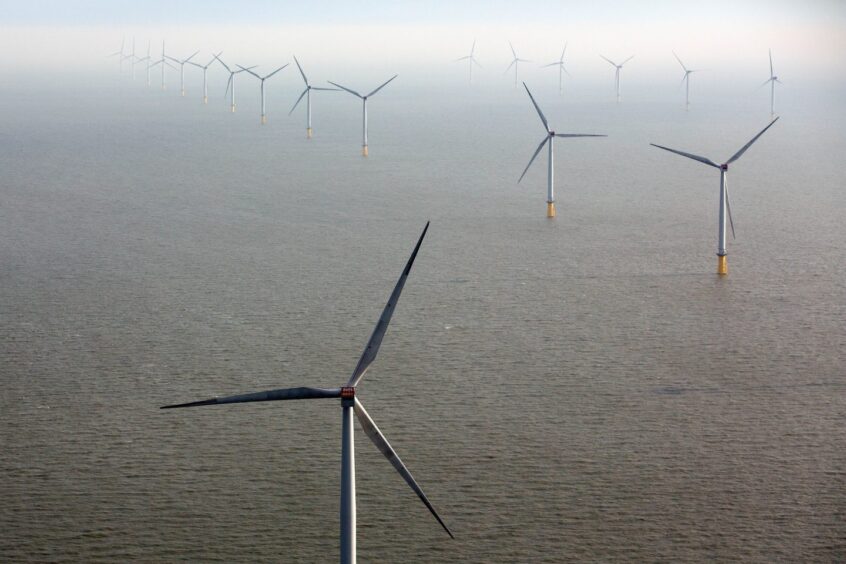
GE Vernova Inc. (NYSE:GEV) plans to reinspect every offshore wind-turbine blade the company has ever produced, after finding a “material deviation” at the factory supplying the component that recently broke at a US project under construction.
“We should have identified this prior to shipping” the blade, Chief Executive Officer Scott Strazik said in an interview Wednesday.
The company is facing scrutiny after a massive blade fell into the ocean July 13 at the project in Massachusetts, stopping construction at the nation’s biggest offshore wind farm. Strazik said there’s no sign of a design flaw in its Haliade-X offshore turbine, but it’s halting production at the Gaspe, Canada, plant while the company inspects its blades.
“The blade left the factory with insufficient bonding — the glue,” Strazik said.
The Gaspe plant in Quebec has been in production since 2006 and has made about 150 offshore blades, including most of those for the Vineyard Wind project that experienced the blade failure. Strazik declined to say how many offshore blades have been produced to date at the company’s three plants.
Debris continues to wash ashore following the incident south of Martha’s Vineyard. It temporarily closed beaches on Nantucket island, one of America’s premiere vacation destinations for well-heeled travelers. Residents vented their frustrations over the blade breakdown at a public meeting of the Nantucket Select Board on Wednesday evening.
“We are deeply concerned about the safety, environmental and economic impacts of this catastrophe on our local residents and visitors to the island,” Chair Brooke Mohr said. “The Select Board is committed to holding Vineyard Wind and GE, the manufacturer of the turbine blades, accountable.”
Town representatives will meet with Vineyard Wind next week to discuss financial reimbursement for economic damages and costs incurred during the clean-up process, she said. It will also renegotiate a so-called “good neighbor agreement” whereby Vineyard Wind and Nantucket agreed to certain conditions of coordination and support.
The incident has also raised questions about the prospects for the nascent offshore wind industry in the US, which has struggled in the past year as high interest rates and supply chain bottlenecks drove up costs. Some projects were canceled, and the Vineyard Wind accident is stoking renewed opposition from some residents.
Financial Guidance
Wind was the sole soft spot in GE Vernova’s second-quarter results, which were released Wednesday. The company, which was spun off from General Electric Co. in April, raised guidance for the year as the global fight against climate change drives demand for electricity. It expects free cash flow for 2024 of $1.3 billion to $1.7 billion, up from its prior forecast of $700 million to $1.1 billion, according to a statement.
GE Vernova’s shares closed down 4.5% on Wednesday.
Two of its three segments are seeing strong results, but the wind unit is expected to see flat organic revenue growth. Strazik said it will approach profitability in 2024 and will be in the black in 2025. The company issued the same guidance for the unit in its first-quarter results.
Its continued guidance for the wind unit “should calm some investor fears over the Vineyard Wind project,” analysts at JPMorgan Chase & Co. led by Mark Strouse said in a research note.
A key part of the company’s efforts to reach profitability for the wind business will be resuming offshore operations. Strazik didn’t say how long it will take to inspect all the blades.
“This is work we know how to do,” said Strazik. “Offshore wind is going to play an important role in the energy transition.”
